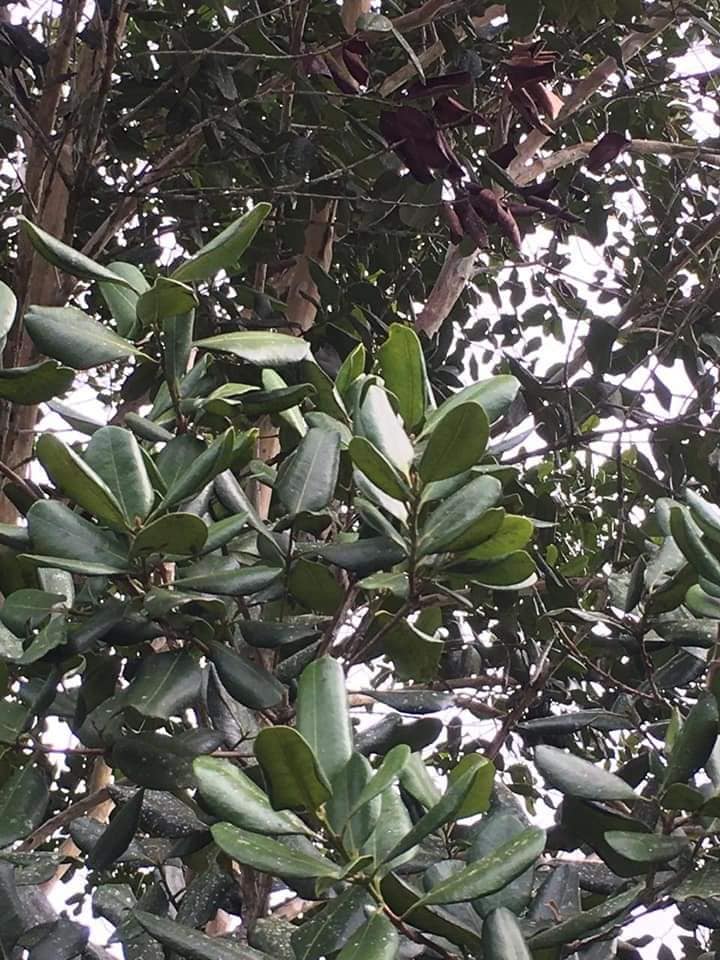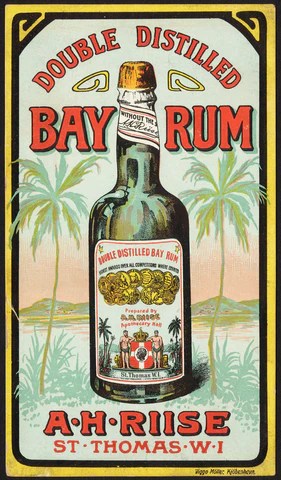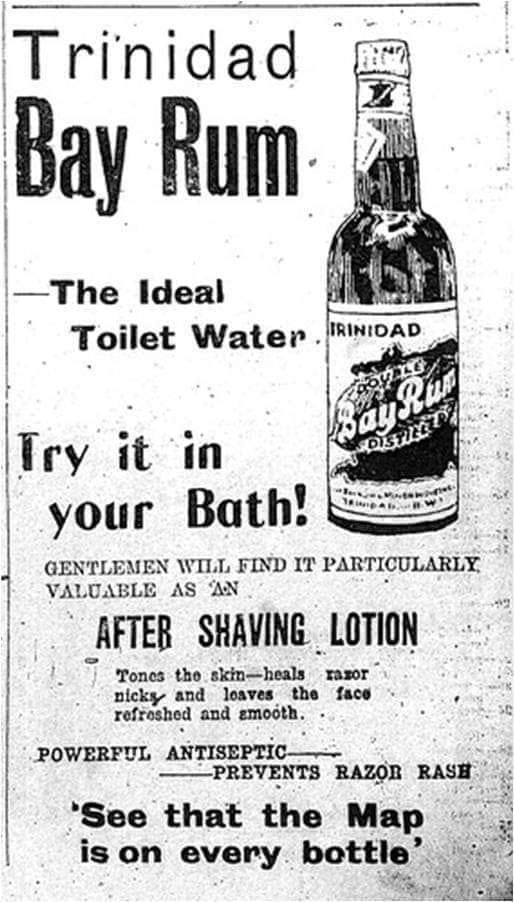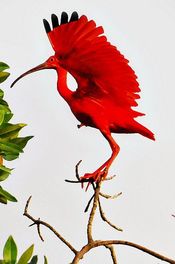|
Each year in May, we shower our mothers with flowers, gifts, and gratitude but how much do we really know about the origins of Mother’s Day? Beyond the greeting cards and brunches lies a rich and sometimes surprising history.
Here are six fascinating facts about Mother’s Day that might just change how you see this heartfelt holiday. 1. Mother’s Day has ancient roots Although the modern celebration of Mother’s Day as we know it began in the early 20th century, the idea of honouring mothers dates back thousands of years. Ancient civilizations such as the Greeks and Romans held festivals dedicated to mother goddesses Rhea and Cybele celebrating motherhood and fertility. These festivals involved offerings, feasts, and rituals to honour maternal figures. 2. The modern Mother’s Day was started by a peace activist The Mother’s Day we know today was championed by Anna Jarvis in the early 20th century. After her own mother’s death in 1905, Jarvis campaigned to create a national holiday to honor mothers for their service and sacrifice. Interestingly, her mother, Ann Reeves Jarvis, had organized “Mother’s Day Work Clubs” to improve health and sanitation, and even promoted peace after the Civil War. 3. Mother’s Day was initially a religious observance Before becoming a secular holiday, Mother’s Day was originally a religious observance. In the United States, it was linked to church services and prayer. Anna Jarvis herself wanted Mother’s Day to be a day for churchgoing, prayer, and quiet reflection on the importance of motherhood, rather than commercial festivities. 4. Anna Jarvis later fought against the holiday’s commercialization Ironically, Anna Jarvis grew to despise the very holiday she helped create. She was dismayed by the commercialization of Mother’s Day greeting cards, floral arrangements, and candy sales felt like an insult to the sincerity she intended. She even filed lawsuits and organized boycotts, hoping to return the holiday to its original purpose. 5. Mother’s Day became official in 1914 After years of campaigning, Anna Jarvis finally saw her dream realized when President Woodrow Wilson signed a proclamation in 1914, declaring the second Sunday in May as Mother’s Day in the United States. It quickly gained popularity and was adopted in various forms around the world. 6. It’s celebrated differently around the world Although the sentiment is universal, Mother’s Day is celebrated on different dates and in unique ways across the globe. In Ethiopia, families gather for a multi-day festival called Antrosht, filled with food, dancing, and storytelling. In Thailand, Mother’s Day is observed on August 12, the birthday of Queen Sirikit, and includes parades and public ceremonies.
0 Comments
Ahead of hurricane weather, vetiver is stabilising this Caribbean island's crumbling hillsides4/30/2025 Jonathan Barcant, founder of the IAMMovement nonprofit, poses with dried vetiver root in his office in Trinidad (Credit: Damir Ali)  The Caribbean is bracing itself for an intense hurricane season. A fragrant plant could help limit damage from extreme weather in Trinidad. In the early hours on a Saturday morning, deep into the dry season, Mary Romany-Constantine makes her way down the steep hills of Paramin – a village on the northern coast of the Caribbean island of Trinidad – to a farmer's market in Diego Martin, with her wares in tow. Homemade wines, bars of soap, bundles of fragrant roots, all displayed on delicately woven mats and in decorative baskets – also for sale. Romany-Constantine makes this wide variety of items all from a single plant that is now responsible for protecting much of the hilly land across Paramin. Its unique root system can function like a retaining wall for areas prone to land slippage when it is planted correctly. Around the world it is known as vetiver grass, but in Paramin the older residents who grew up using the plant call it "metiver". The hillsides of the agricultural community are covered in beds of aromatic "green seasoning": chives, thyme, basil, parsley, mint, rosemary. But the roots of these plants are no match for the heavy rains of the June to December wet season, and every year communities like Paramin lose precious fertile topsoil to erosion and landslides. While locals give anecdotal information on the damage done over the years, there's a dearth of research on exactly how severe the problem is. "Whenever we had a lot of rain, the farmers would have landslides and would lose some of their crops," says Romany-Constantine. She says she has long been connected to the greenery around her. In her garden, she grows perfumed vetiver, which is able to withstand the extreme weather that the islands are facing – primarily heavy rainfall which leads to flooding and landslides. Climate change is dramatically increasing the risk of powerful hurricanes in the Caribbean and the region is currently bracing itself for a super-charged season. Early forecasts are estimating that 2024's Atlantic hurricane season could be among the most active on record. The islands of Trinidad and Tobago lie on the edge of the "hurricane belt" and hurricanes rarely make landfall, but the islands are vulnerable to increased flooding and hillside erosion. Flash flooding and above-normal rainfall is predicted for this year. The most destructive hurricanes to hit the Caribbean Hurricane Maria, 2017: Maria hit Puerto Rico and the Lesser Antilles while they were still recovering from Hurricane Irma, killing more than 3,000 people and reaching windspeeds of up to 175mph (280 km/h). Hurricane Ike, 2008: Flooding and mudslides killed 74 people in Haiti and two in the Dominican Republic. Hurricane Wilma, 2005: Wilma killed 22 people across the Caribbean and caused $16.8bn (£13.2bn) in damage. Hurricane David, 1978: David caused more than 2,000 deaths and $1.54bn in damage. Waves as high as 30ft (9.1m) were recorded and mudslides killed hundreds. For the past decade, the Paramin community has been working with IAMovement, a local non-profit organisation, to enable young people to plant vetiver along vulnerable hillsides to help protect the land from the flooding and landslides that come with more extreme weather in the rainy season. Non-native, but not invasiveVetiver grass itself is not native to the Caribbean, although there is anecdotal evidence of it growing here for at least the past 50 years. The plant is endemic to India, but the more commonly used types of vetiver have been introduced into many tropical countries, where it can thrive without becoming invasive – it requires human intervention to spread. When removed from the ground, the fragrant roots can be used to produce an oil for perfumes and cosmetics or woven into mats and other crafts. But in the ground is where the plants really shine. The word vetiver comes from the Tamil word vettiveru, meaning "root that is dug up" – and it is the vetiver roots that make it such a vital tool for soil protection and rehabilitation. A study on vetiver use in Australia and South Africa found the plant to be highly effective for land stabilisation and for revegetation of contaminated sites due to its tolerance for "extreme soil conditions including heavy metal contaminations". Instead of building a wall I’m going to plant vetiver – Mary Romany-ConstantineThe fibrous roots are thick when mature, and can extend down to 3m (10ft) deep within two years of planting – eventually reaching over twice that depth in suitable conditions. A hedge of vetiver creates a network of roots holding the land in place. The roots are incredibly strong. A study published in 1996 measured the tensile strength – the maximum stress a material can bear before breaking – of vetiver roots, with the average root strength being about one third of the tensile strength of steel. The roots also have the added impact of strengthening the soil that surrounds the roots. Rehabilitating the landscapeFor Jonathan Barcant, founder of IAMovement, the high rate of land slippage in Paramin – and the community's historical use of vetiver grass – made this community the ideal space to launch the vetiver education and planting programme. "I was desperately looking for green solutions," he says. Barcant, who hails from the nearby town of Maraval and previously worked as an engineer on mining projects, found himself overwhelmed after witnessing the destructive impact the industry had on the environment around it. Barcant's work involves rehabilitating the land that has been damaged by quarries, where vetiver can be planted to help make the soil more fertile for less hardy plants that are native to the region, unlike vetiver. Barcant's project has already seen success. The initiative is currently engaging community members from the Turure area of Sangre Grande, where quarrying has left land in need of remediation. The participants learn how to work with vetiver grass, sargassum seaweed for mulching, and reforestation with native trees to rehabilitate the landscape. The IAMovement's "Me We Green" programme has helped establish over 158,0000 vetiver plants in nine communities across the country. Romany-Constantine is one of several residents involved in Barcant's vetiver project. She hopes to use the plant to stabilise the land around her house. "It makes such a difference," says Romany-Constantine. "It's been helping a lot of people… It actually works like a wall – where I'm building my house, instead of building a wall I’m going to plant [vetiver]." The grass also helps water from rainfall to infiltrate the soil more widely rather than just flowing over the top of the land and taking the top layer of soil with it. A 2019 study in Ethiopia found that the tight mesh of a vetiver root system slows water flow and helps it to seep deeper into the soil. For Aidan Farrell, senior lecturer in plant physiology at the University of the West Indies, St Augustine Campus, vetiver is one of several plant "tools" that can help alleviate the issues of flooding and erosion on a smaller scale. "The scientific community is on the lookout for these nature-based solutions more than ever when it comes to climate change," says Farrell. "As a solution, [vetiver] is more of a limited scale – it's not a whole habitat; it's one species." Trinidad and Tobago is slipping into the hurricane …There could be massive destruction in the country – John Agard The importance of protecting slopes matters not only to the people who live there, but also the communities in the nearby valleys. "Areas such as Port of Spain are surrounded by slopes where the native vegetation has been removed," says Farrell. He notes that flash flooding and landslips have been associated with extreme weather like tropical storms making landfall in Trinidad. "Restoring vegetation would help retain moisture in the soil and hold the soil together, reducing the risk of flooding and landslides." But solving the problem requires ongoing care, says Farrell. "Planting is easy, but keeping healthy vegetation throughout the tropical dry season is difficult." Holding up the communityAnother of Barcant's projects works with communities in Laventille, a town just outside the capital city of Port of Spain. Unlike the rural Paramin, Laventille is a densely populated area. Jennifer Cumberbatch, a long-time Laventille resident, watched as the house where she was raised collapse and slid down the hillside. "From childhood growing up, that area used to slip," she says, adding that underground springs nearby made the soil unstable. In 2022, the entire side of the hill fell away. After the landslip, Cumberbatch says, her daughter did some research and found out about IAMovement's local "Me We Green" programme. While on a site visit to Cumberbatch's house, Barcant is shown the remains of a road nearby, which is now a thin strip of asphalt with two gouged-out cliffs on either side. While the land around Cumberbatch is falling away, the slopes around her plot is holding firm with curving rows of dense vetiver. The first batch of over 700 vetiver plants took about an hour or two to plant, with the Cumberbatch family working the soil alongside four members of the IAMovement team. Within four months, they had a flourishing row of hedges. Not all vetiver planting projects are a resounding success. Further north, Mary Romany-Constantine's sister Julie, known to family and friends as Erlyn, has also been a part of the vetiver planting programme. The mountain wall overlooking her house is layered with thin vetiver. But unlike the hearty bushes at other locations, these have not grown as full. Because of their position on the mountainside, they are shaded from the sun for most of the day. This is one of the limitations of working with vetiver – Barcant notes that he has observed the grass needs a great deal of direct sunlight to thrive. For it to be an effective solution, it needs to be planted in a structured manner to achieve the underground root wall effect provided by the hedgerows. In addition, vetiver growth can be slow. In situations where a piece of land is in urgent need of support, Barcant says, it may be better to use other options like a retaining wall, as the plants need at least two years to grow to an effective depth. Shifting hurricane pathsLike many of the mountainous parts of Trinidad and Tobago, Paramin has always been susceptible to the landslides and soil erosion that accompany the region's rainy season, although data on exactly how affected the area has been is sparse. Romany-Constantine recalls how farmers across the hillsides have lost many crops over the years to landslips. As climate change alters the Caribbean's rainy season, solving this issue becomes more urgent. The Caribbean Regional Climate Centre has noted that this year could see an intense wet season. Trinidad and Tobago's position just outside of the main passageway for hurricanes has offered some protection. Though hurricanes have only made landfall in Trinidad and Tobago twice in recorded history, the devastation was intense. Hurricane Flora hit in 1963, and subsequently destroyed 2,750 of Tobago's 7,500 houses, caused massive landslides, felled 75% of Tobago's trees, and killed 20 people across the two islands. But the climate crisis may be altering that trajectory, according to John Agard, professor of tropical island ecology at The University of the West Indies. Hurricanes thrive on warmer waters, and climate change affects sea-surface temperatures across the globe. "Trinidad and Tobago is slipping into the hurricane zone because of heat development," says Agard. "There could be massive destruction in the country." Habitat-wide restorationUltimately, to see a widespread rehabilitation of Trinidad's landscapes, Farrell stresses it is important to look to large-scale reforestation of native vegetation. Farrell points to the success of the country's other main island, Tobago, and the effect of protecting the Main Ridge Forest Reserve, a mountainous forest across the spine of the island and the oldest legally protected forest reserve in the world. Walking through one of the trails across the reserve, you can feel the difference in moisture – the soil is damp even during the scorching dry season affecting the rest of the island this year. According to Farrell, this protection means older, more resilient root systems across the ridge, which help protect the land from landslides in the rainy season and forest fires in the dry. He says that in the mountains of Trinidad's northern range, where large swathes of tree cover have been removed, replanting is vital to rehabilitating the landscape – and vetiver is just one of many tools in a wider arsenal. As the islands prepare for the possibility of intensified wet seasons and perhaps a future of hurricanes reaching the shores of Trinidad and Tobago, it is important that community projects like this one work in tandem with a range of other nature-focused responses to the issues surrounding climate change, says Farrell. "People are looking for nature-based solutions," he says. "That includes bringing agroforestry intro agriculture, maintaining mangroves on the coast to avoid coastal erosion, and trying to maintain native forests." With such incredible biodiversity at their fingertips, he says, that the island has many natural tools to reach for, and vetiver is just one of them. (Source; BBC.com, June 2024) Author : ANGELO BISSESSARSINGH.
It is used as a bath water additive, aftershave, beverage (NOT ADVISABLE) and is the cheapest way to “sap yuh head” when throbbing migraines set in. The comforting smell of bay rum is a scent signature engrained in the psyche of every Trinbagonian. It conjures up many memories….of granny or mammy rubbing yuh head when yuh sick, the village drunk when he cyah get puncheon, countryside funeral wakes and such. The history of Bay Rum can be traced back as far as the 16th Century when Sailors in discovered that the West Indies bay leaf made a great perfume to freshen up and mask the stink they acquired while being stuck on a ship for months. To apply the scent to themselves, the sailors would rub the dry leaves on their body, thus leaving the fragrant oil on their skin. Tired of having to rub bay leaves on himself like a crazy seafarer, some sailor got the idea that rum would make a great liquid to steep the bay leaves in to extract their essential oils and make an easy-to-apply cologne. And with that, bay rum was born("sailors would rub" 2010). Islanders took this basic recipe and began adding their own olfactory flourishes by mixing in cloves, citrus rind, and cinnamon. “The first bay rum sold in Trinidad was originally produced on the island of St Thomas. Local manufacture began in the early 1900s. It was initially prepared by collecting the distillate from boiling bay leaves in white rum, but is now made from a combination of bay oil, citrus and spice oils, alcohol and water. In 1838 - Danish chemist Albert Heinrich Riise became interested in this local remedy and discovered that by mixing St John bay leaf oils with fine Virgin Island rums, it created an amazing fragrance.”In Trinidad, it was sold by practically every shop and dispensary as one of the essentials in a home medicine melange. This was especially important in a time when proper medical attention was unlikely to be had outside of the large towns and even if available, was beyond the reach of the working class population. Its use as an antiseptic was also well established. I have seen advertising for locally produced bay rum dating as far back as 1909 but the properly branded TRINIDAD BAY RUM did not seem to exist before 1918. It was produced and bottled at Frederick Estate in Caroni which at the time was managed by the formidable Captain Watson and boasted one of the most up to date sugar refineries in the West Indies, which was designed and assembled under the instruction of engineer H.A Green (Green St. in Tunapuna is so named in his memory) . In 1887, two years after the complex was erected, it was described by Collens thus: “The buildings at Frederick were designed and erected, and the machinery put together, by Mr. H. A. Green, one of the most experienced engineers in the colony. They are 240 feet in length, and 160 feet in breadth, the chimney being 150 feet high. The whole structure is very far from being the unsightly mass a factory so often seems to be, the glass window and green jalousies alternating with pleasing effect.” The usine contained a distillery which manufactured several grades of alcohol , including industrial distillate as well as very fine rums. Contracting global sugar markets and other economic considerations forced Frederick Estate to rationalize its operations as part of the larger enterprise , Caroni Ltd. The much-vaunted factory was dismantled and re-established at Brechin Castle where its shell still stands . This was in the 1930s. The distillery remained at Caroni however, until its closure and sale in the early 2000s. Compelled to find ways of increasing its profitability, bay rum was introduced as part of the product line and soon became very popular, with its instantly recognizable label that was initially pasted onto black 12 oz. bottles. Sold at six and later ten cents per unit, it was a commercial success for Caroni. It was also available wholesale in stoneware demijohns from the factory. One of the first commission agents to market the product aggressively was a commission merchant of Chinese-Trinidadian extraction named Louis Jay Williams (L.J Williams). He was also ironically, the local distributor for Limacol which was the main rival of the bay rum, although the former was considerably more expensive, being imported from British Guiana where it was manufactured by Bookers (known also for their iconic and long-running Booker’s Drug Store Almanac). By the 1930s, the Frederick Estate factory was relocated to Caroni Ltd’s Brechin Castle compound and sales of Trinidad Bay Rum proved to be a commercial success.Trinidad Bay rum has passed through several owners since it was first manufactured on Frederick Estate in Caroni. Ironically enough the current manufacturer of the product (now called Cari Bay Bay Rum) is located at Frederick Industrial Estate in Caroni, just a mere stone’s throw away from the distillery where it was originally formulated. There are even claims that a Portuguese Immigrant Claudio Carvalho did his own distillation at a Bay Rum Factory he established in San Fernando and was the main distributor of Bay Rum in San Fernando and environs in early 1900s. (Source: Virtual Museum of Trinidad and Tobago, Jan 16, 2025) It was so refreshing to buy a "press" with guava syrup and condensed milk .
(Source: Trinbago Golden Memories, Nov 29, 2024)  Wow, I had no idea about the original story of Rudolph the Red-Nose Reindeer! If you aren't familiar with it either, read below: As the holiday season of 1938 came to Chicago, Bob May wasn’t feeling much comfort or joy. A 34-year-old ad writer for Montgomery Ward, May was exhausted and nearly broke. His wife, Evelyn, was bedridden, on the losing end of a two-year battle with cancer. This left Bob to look after their four-year old-daughter, Barbara. One night, Barbara asked her father, “Why isn’t my mommy like everybody else’s mommy?” As he struggled to answer his daughter’s question, Bob remembered the pain of his own childhood. A small, sickly boy, he was constantly picked on and called names. But he wanted to give his daughter hope, and show her that being different was nothing to be ashamed of. More than that, he wanted her to know that he loved her and would always take care of her. So he began to spin a tale about a reindeer with a bright red nose who found a special place on Santa’s team. Barbara loved the story so much that she made her father tell it every night before bedtime. As he did, it grew more elaborate. Because he couldn’t afford to buy his daughter a gift for Christmas, Bob decided to turn the story into a homemade picture book. In early December, Bob’s wife died. Though he was heartbroken, he kept working on the book for his daughter. A few days before Christmas, he reluctantly attended a company party at Montgomery Ward. His co-workers encouraged him to share the story he’d written. After he read it, there was a standing ovation. Everyone wanted copies of their own. Montgomery Ward bought the rights to the book from their debt-ridden employee. Over the next six years, at Christmas, they gave away six million copies of Rudolph the Red Nosed Reindeer to shoppers. Every major publishing house in the country was making offers to obtain the book. In an incredible display of good will, the head of the department store returned all rights to Bob May. Four years later, Rudolph had made him into a millionaire. Now remarried with a growing family, May felt blessed by his good fortune. But there was more to come. His brother-in-law, a successful songwriter named Johnny Marks, set the uplifting story to music. The song was pitched to artists from Bing Crosby on down. They all passed. Finally, Marks approached Gene Autry. The cowboy star had scored a holiday hit with “Here Comes Santa Claus” a few years before. Like the others, Autry wasn’t impressed with the song about the misfit reindeer. Marks begged him to give it a second listen. Autry played it for his wife, Ina. She was so touched by the line “They wouldn’t let poor Rudolph play in any reindeer games” that she insisted her husband record the tune. Within a few years, it had become the second best-selling Christmas song ever, right behind “White Christmas.” Since then, Rudolph has come to life in TV specials, cartoons, movies, toys, games, coloring books, greeting cards and even a Ringling Bros. circus act. The little red-nosed reindeer dreamed up by Bob May and immortalized in song by Johnny Marks has come to symbolize Christmas as much as Santa Claus, evergreen trees and presents. As the last line of the song says, “He’ll go down in history.” Rudolf will air December 6th, NBC, 8:00 Eastern, 7:00 Central time. Research done by Patricia Bissessar
There's no Christmas plant more iconic than the Poinsettia . Almost every plant lover would purchase one or more of these plants to add to their home décor during the Christmas Holidays. I remembered growing up as a child many homes in the countryside had a large Poinsettia Plant growing in their front yard. But have you ever wondered about the symbolism behind the poinsettia flower and its connection to Christmas? There is an old Mexican legend about how Poinsettias and its connection to Christmas. According to the legend there was once a poor Mexican girl called Pepita who had no present to give the baby Jesus at the Christmas Eve Services. As Pepita walked to the chapel, sadly, her cousin Pedro tried to cheer her up. 'Pepita', he said "I'm sure that even the smallest gift, given by someone who loves him will make Jesus Happy." Pepita didn't know what she could give, so she picked a small handful of weeds from the roadside and made them into a small bouquet. She felt embarrassed because she could only give this small present to Jesus. As she walked through the chapel to the altar, she remembered what Pedro had said. She began to feel better, knelt down and put the bouquet at the bottom of the nativity scene. Suddenly, the bouquet of weeds burst into bright red flowers, and everyone who saw them were sure they had seen a miracle. From that day on, the bright red flowers were known as the 'Flores de Noche Buena', or 'Flowers of the Holy Night'. Ever since the poinsettia has been a symbol of The Christmas Miracle. Reference : Ranch, Paul Ecke. ("The Legend of the Poinsettia." 11/14/07). http://www.ecke.com/HTML/h_corp/corp_legend.html (Source: Angelo Bissessarsingh Virtual Museum of Trinidad and Tobago, Nov 17, 2024) |
T&T news blogThe intent of this blog is to bring some news from home and other fun items. If you enjoy what you read, please leave us a comment.. Archives
July 2025
Categories
All
|













 RSS Feed
RSS Feed